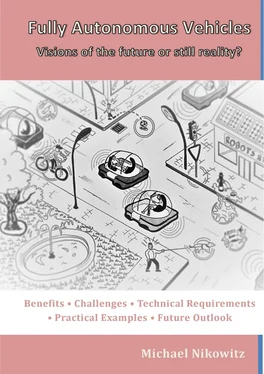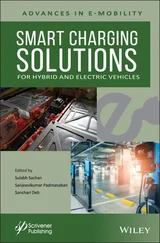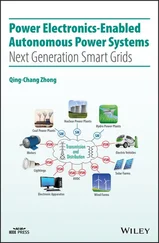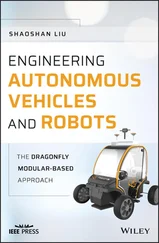Future vehicles need to be able to meet the regulatory requirements, mentioned above. Thus, they need to offer the following characteristics: connectivity, efficiency, zero impact on the environment, safety, partly/fully autonomous driving(see Fig 10) .
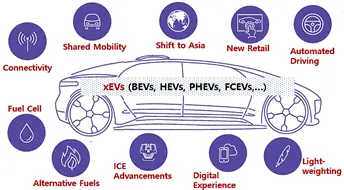
Fig 10: Major trends will impact the future of the automobile
Worldwide industry and government are forced to consider alternative and sustainable solutions for transportation.
Vehicles driven by alternative drive trains offer unique advantages concerning energy efficiency, emissions reductions, and reduced petroleum use. Thus, they have become a research focus around the world. Decarbonizing transport is proving to be one of the largest research and development projects of the early 21 stcentury. Low-carbon technologies are therefore rapidly advancing, with petrol and diesel hybrids (HEV), plug-in hybrids (PHEV), battery electric (BEV), and hydrogen fuel cell (FCEV) being developed by nearly every major manufacturer.
A BEV is an EV that utilizes chemical energy stored in rechargeable battery packs. EVs use electric motors instead of, or in addition to, internal combustion engines (ICE). Vehicles using both electric motors and ICEs are called HEVs and are usually not considered pure BEVs. HEVs with batteries that can be charged and used without their ICE are called PHEVs and are pure BEVs while they are not burning fuel. FCEVs use hydrogen gas to power an electric motor (Dictionary of Environmental Science and Technology [11] ) .
| Electric driven vehicles, including BEVs, HEVs, PHEVs, FCEVs (further referred as xEVs in this book), are seen as one way of reducing oil use and GHG emissions and to improve local air quality. |
All of the global megatrends mentioned above and their resulting requirements lead to two major trends in the car manufacturing industry:
• electrification of the drive train and
• fully automated (autonomous) driving.
| Currently, the car manufacturing industry is facing the electrification of the drive train as well as autonomous driving. |
The electrification of the drive train simplifies the introduction of autonomous vehicles. This was not the case in the early 50’s, as the internal combustion engine (ICE) was the dominating propulsion force and progress on EVs haven’t been available in that dimension which it is today.
The IEA [12] reports that there were approximately 700,000 BEVs and PHEVs on the streets(May 1 st, 2015). That number is expected to reach the 1 million mark by the end of 2015. There are predictions that the EV market will reach 8% of total car sales by 2020 (2.5M BEVs, 3.1M PHEVs and 6.5M HEVs).
Thanks to the implementation of xEVs, autonomous driving is becoming more realistic than ever.
2 Benefits and societal impacts of autonomous driving
2.1 The promises of autonomous driving
The operation of autonomous vehicles is inherently different from vehicles operated by human drivers, as they can be programmed to be much more efficient in terms of fuel economy or improved reaction times.
By programming them not to break traffic rules, the need for traffic enforcement patrols will be greatly reduced or eliminated.
They can deliver unlicensed drivers or elderly people to their destinations.
Most of all, they promise to change our system of mobility as we know it today: away from car-owning, towards car-sharing. This enables new mobility concepts, which wouldn’t be possible without these vehicles.
This section emphasizes some of the largest benefits that have been identified in existing research areas.
As already described in the introduction (compare chapter 1), climate change plays a key role when it comes to the development of future vehicles. Thus, one of the biggest promises of autonomous driving is the forecast that these cars will become more fuel efficientand consequently more eco-friendly.
Intimately connected with that is the electrification of the drivetrain, whichis still ongoing and will play a major role in future vehicles.
Based off of a forecast of U.S. car emissions and gasoline prices in 2030, sustainable energy researchers at Lawrence Berkeley National Laboratory in California found that the emissions of a self-driving taxi would be 63-82% lower than those of a privately owned hybrid electric car, and 90% lower than today’s privately owned gasoline cars. If by 2030 just five percent, or 800,000, of vehicles, were converted to robot-taxis, it would save 7 million barrels of oil per year and prevent up to 2.4 million metric tons of CO2 emissions per year (Spectrum, 2015 [13] ).
Autonomous vehicles promise to be more efficient to use on roadwaysthrough shorter headway control, thus they can travel in much closer formation than conventional vehicles.
This also affects the reduction of congestionby controlling the flow of traffic, as these vehicles allow for smoother braking and fine speed adjustments of following vehicles. Thus, it has an impact on fuel savings due to the fact that the car knows what kind of load will be placed on the engine and adapts accordingly.
By having an impact on the entire transportation system, autonomous driving enables automated platoon driving(platoons decrease the distances between cars using electronic, and possibly mechanical, coupling, which would allow many carsto accelerate or brake simultaneously.). Transportation efficiency could be improved by automating platoon driving of trucks and buses (on the highway). Because the following vehicles can closely and accurately track the vehicle at the head, it eliminates any wasteful driving and enables eco-driving. Fuel economy could be increased (mainly through reduced air resistance of shared slipstreams), long-distance journeys could be arranged,off peak travel times(as autonomous trucks could travel non-stop) and truck drivers wouldn’t be needed any more (though this would create a disadvantage too in terms of unemployment). As this ability also might require special express lanes, there might be a need for additional infrastructure to deal with autonomous trucks. If vehicles are able to travel closer together, the system’s fuel and congestion savings rise further, and some experts expect a significant increase in highway capacityon existing lanes [14].
This significant increase in highway capacity might also reduce the need for traffic policing. Further,with safer travel at higher speeds, higher speed limitsare also foreseeable.
Autonomous driving also has an impact on the comfort of the “driver” itself, which won’t be needed in the function as operator/driver anymore. Additionally, it will enable dramatic increases in distancetraveled per day, as long distance journeys could be arranged now. Thus, “drivers” will have more freedom and free time. Once the technology is truly perfected, time previously spend on travel can instead be put to use for working or relaxing.
But the “driver” won’t only profit in terms of free time, as new car comfort features will greatly improve user experience and user productivity. U.S. drivers spend an average of 75 billion hours each year on the road, which can now be put to good use. Whether people choose to spend this time eating, sleeping, watching TV, reading the newspaper, working, or simply conversing, it should result in significantly de-stressing the average commute and life in general [15].
Читать дальше
